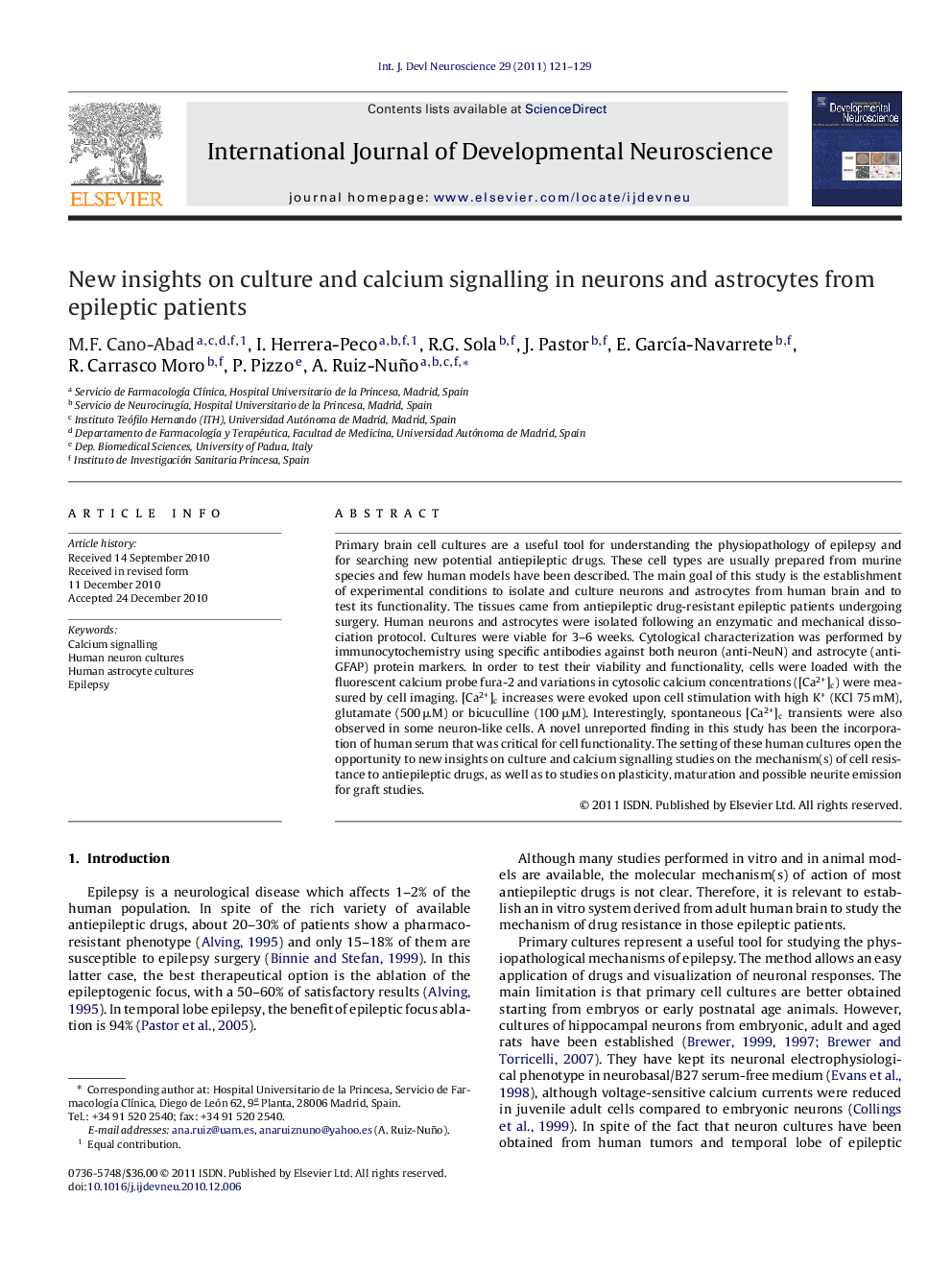| Article ID | Journal | Published Year | Pages | File Type |
|---|---|---|---|---|
| 5893969 | International Journal of Developmental Neuroscience | 2011 | 9 Pages |
Primary brain cell cultures are a useful tool for understanding the physiopathology of epilepsy and for searching new potential antiepileptic drugs. These cell types are usually prepared from murine species and few human models have been described. The main goal of this study is the establishment of experimental conditions to isolate and culture neurons and astrocytes from human brain and to test its functionality. The tissues came from antiepileptic drug-resistant epileptic patients undergoing surgery. Human neurons and astrocytes were isolated following an enzymatic and mechanical dissociation protocol. Cultures were viable for 3-6 weeks. Cytological characterization was performed by immunocytochemistry using specific antibodies against both neuron (anti-NeuN) and astrocyte (anti-GFAP) protein markers. In order to test their viability and functionality, cells were loaded with the fluorescent calcium probe fura-2 and variations in cytosolic calcium concentrations ([Ca2+]c) were measured by cell imaging. [Ca2+]c increases were evoked upon cell stimulation with high K+ (KCl 75 mM), glutamate (500 μM) or bicuculline (100 μM). Interestingly, spontaneous [Ca2+]c transients were also observed in some neuron-like cells. A novel unreported finding in this study has been the incorporation of human serum that was critical for cell functionality. The setting of these human cultures open the opportunity to new insights on culture and calcium signalling studies on the mechanism(s) of cell resistance to antiepileptic drugs, as well as to studies on plasticity, maturation and possible neurite emission for graft studies.
Research highlights⺠Primary brain cell cultures are a useful tool for understanding the physiopathology of epilepsy. ⺠We study conditions to isolate and culture neurons and astrocytes from human brain biopsy. ⺠The fluorescent calcium probe fura-2 was used to test their viability and functionality. ⺠The incorporation of human serum was critical for cell functionality. ⺠These human cultures open the opportunity to new insights on culture and calcium signalling studies.
